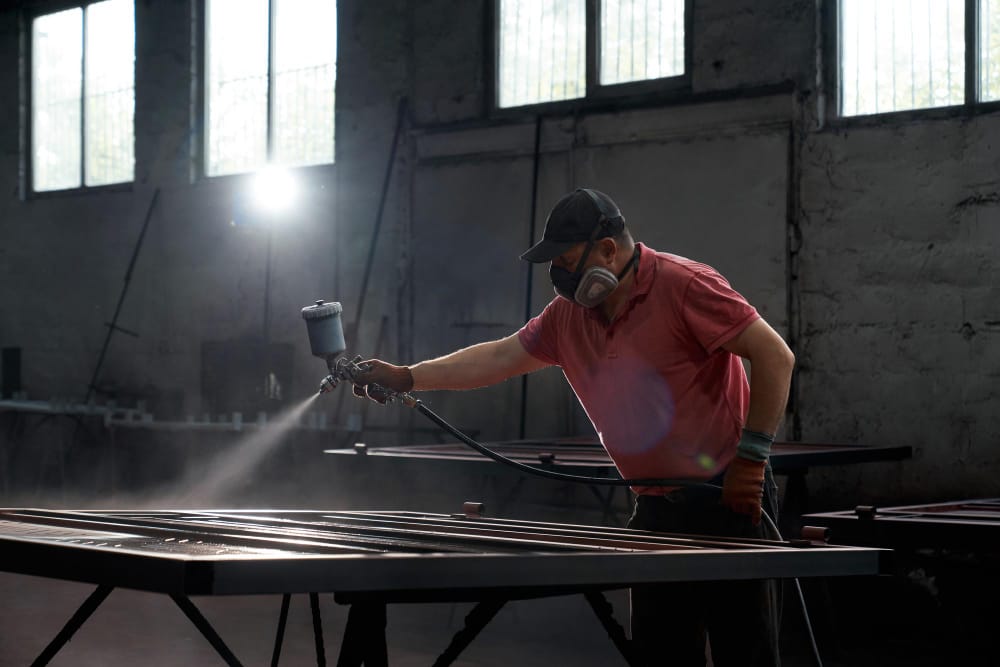Have you ever wondered why some metals stay shiny and rust-free for years while others quickly corrode? The secret is often zinc coating. This is likely why you’ve landed here, looking for answers to the question: What is Zinc Coating? In this article, we’ll explore the fundamentals of zinc coating, the different types available, how it works, and where it’s most commonly applied—so you can understand why it’s considered one of the most effective solutions for corrosion protection.
Table of Contents:
- What is Zinc Coating?
- Types of Zinc Coating
- How Zinc Coating Works
- Common Zinc Coating Applications
- Conclusion
What is Zinc Coating?
Zinc coating is a protective layer applied to steel or iron surfaces to shield them from corrosion and environmental damage. By creating a barrier between the metal and moisture, zinc helps prevent rust from forming, which significantly extends the lifespan of the underlying material. Unlike paint or other surface treatments, zinc doesn’t just sit on top—it bonds with the metal, offering long-lasting protection even if the surface gets scratched or exposed to the elements. This makes zinc coating a widely used solution across industries that depend on strong, durable, and low-maintenance metal parts or structures.
Types of Zinc Coating
Not all zinc coatings are the same. Different methods are used depending on the environment, level of protection required, and the type of metal being treated. The most common types include:
Hot-Dip Galvanizing
This is one of the most durable methods, where steel or iron is dipped into molten zinc. It creates a thick, bonded layer that can withstand harsh outdoor conditions, making it ideal for bridges, poles, and structural steel.
Electrogalvanization (Electroplating)
This is a thinner layer of zinc that is applied using an electric current. While not as heavy-duty as hot-dip, it provides a smoother finish and is widely used in the automotive industry and consumer products requiring a neat appearance in addition to corrosion resistance. Although the layer is thinner compared to galvanizing, it is effective when the metal is not exposed to extreme environments.
Zinc Spraying (Thermal Spraying)
In thermal spraying, molten zinc is sprayed onto the surface to form a protective layer. This method is often used for large structures or repairs that cannot easily fit into a galvanizing bath. The coating created is thick and durable, and it provides strong corrosion protection even in challenging industrial or marine environments.
Mechanical Plating
Small parts such as nuts, bolts, and fasteners can be coated through a tumbling process with zinc powder, making this method cost-effective for mass production.
Each type of zinc coating has its strengths, and choosing the right one depends on where and how the coated material will be used.
How Zinc Coating Works
Zinc coating protects steel and iron in two key ways: barrier protection and sacrificial protection. First, the zinc layer acts as a physical barrier, preventing moisture, oxygen, and chemicals from reaching the underlying metal. Second, even if the coating is scratched or damaged, zinc naturally sacrifices itself by corroding first, instead of the steel beneath it. This process is known as “cathodic protection,” and it’s what makes zinc coating so reliable. Over time, the zinc also forms a protective layer of zinc carbonate when exposed to the atmosphere, adding yet another shield against corrosion.
Common Zinc Coating Applications
Because of its versatility and long-lasting protection, zinc coating is used across many industries where strength, safety, and durability are essential:
- Construction – Bridges, pipelines, guardrails, and roofing materials often rely on galvanized steel to withstand outdoor conditions.
- Automotive – Car bodies, frames, and components are zinc-coated to protect against rust caused by road salts, rain, and humidity.
- Appliances – Everyday household items like washing machines, refrigerators, and microwaves use zinc-coated steel to extend product lifespan.
- Energy and Utilities – Transmission towers, wind turbines, and solar panel structures rely on zinc protection to ensure stability over decades.
- Marine – Ships, docks, and offshore equipment use zinc coating to fight corrosion in salty, humid environments.
From infrastructure and transportation to the products we use at home, zinc coating plays a silent but crucial role in keeping metals strong, safe, and long-lasting.
Conclusion
So, what is zinc coating? Zinc coating might not be glamorous, but, at its core, it’s a reliable solution that shields steel and iron from rust, moisture, and harsh environments, ensuring durability and reducing costly repairs or replacements. Whether it’s used in construction, automotive, appliances, or marine applications, zinc coating offers the peace of mind that your materials will last longer and perform better, even under challenging conditions.
If you’re looking for the most effective way to protect your investments from corrosion, zinc coating is a proven choice. Reach out to Ener-Spray today to explore tailored solutions that can extend the lifespan of your property, equipment, or projects—and save you from the headaches of premature wear and expensive maintenance.
